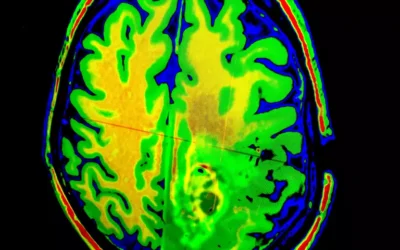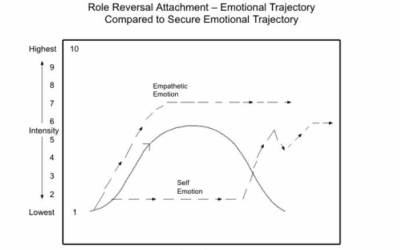The Philosophy of Psychotherapy
Healing the Modern Soul is a series about how clinical psychology will have to change and confront its past if it is to remain relevant in the future. Part 1 Part 2 Part 3 Part 4 Healing the Modern Soul Appendix
The Corporatization of Healthcare and Academia: A Threat to the Future of Psychotherapy
The field of psychotherapy is at a critical juncture, facing numerous challenges that threaten its ability to effectively address the complex realities of the human experience. Chief among these challenges is the growing influence of corporate interests and the trend towards hyper-specialization in academic psychology, which have led to a disconnect between the profession and its roots, as well as a lack of understanding of the physical reality of the body, anthropology, and the history of the field.
In this article, we will explore the ways in which the corporatization of healthcare and academia is impacting psychotherapy, and argue that in order for the profession to remain relevant and effective, it must embrace a more holistic and integrative approach that recognizes the interconnectedness of the mind, body, and spirit. This requires a renewed commitment to developing a coherent concept of self, a shared language and understanding of implicit memory, and a vision of psychotherapy as a means of empowering individuals to become more effective at being themselves in the world and, in turn, better at transforming the world for the better.
Main Ideas and Key Points:
- Psychotherapy is facing significant challenges due to the growing influence of corporate interests and hyper-specialization in academia, which threaten its ability to effectively address the complexities of the human experience.
- To remain relevant and effective, psychotherapy must adopt a more holistic and integrative approach that recognizes the interconnectedness of mind, body, and spirit.
- Developing a coherent concept of self is crucial for psychotherapy, as it captures the dynamic and ever-evolving nature of human identity and experience. This requires drawing insights from various disciplines, including psychology, philosophy, anthropology, and the humanities.
- Understanding and working with implicit memory, the unconscious and somatic ways in which our past experiences shape our present, is essential for effective psychotherapy.
- The ultimate goal of psychotherapy is to empower individuals to become more authentic, purposeful, and effective in their lives and to foster their ability to positively transform the world around them.
- Psychotherapy must navigate the dialectical tension between the individual’s authentic self and the constraints imposed by their social and cultural environment.
- The self is best understood as a complex ecosystem of conscious and unconscious processes, constantly evolving in response to both internal and external factors.
- Engaging with the symbolic, intuitive, and spiritual dimensions of human experience is crucial for facilitating meaningful personal transformation through psychotherapy.
- Psychotherapy is an existential and sacred endeavor that provides a space for individuals to grapple with the profound questions and paradoxes of the human condition.
- By embracing the full complexity of human experience and empowering individuals to enact change, psychotherapy has the potential to contribute to the development of a more just, compassionate, and thriving world.
The Corporatization of Healthcare and Academia
The influence of corporate interests on healthcare and academia has had a profound impact on the field of psychotherapy. The pressure to maximize profits and minimize costs has led to a shift away from comprehensive diagnosis and towards a reliance on quick fixes like medication and brief, manualized therapies.
This trend is particularly evident in the way that psychiatry has evolved over the past few decades. Psychiatrists used to spend an entire hour with their patients doing psychotherapy, but now the majority of the profession relies solely on drug therapy. In fact, a staggering 89% of psychiatrists used only drug therapy in 2010, compared to just 54% in 1988 (Mojtabai & Olfson, 2008). Patients are often left feeling frustrated and unheard, with many giving up on medication after their psychiatrist writes a script in the first and last five minutes of their first session.
The same forces are at work in academia, where the cost of education has skyrocketed and the focus has shifted towards producing “products” rather than fostering critical thinking and innovation. Adjunct professors, who often lack the expertise and experience to teach psychotherapy effectively, have replaced tenure-track faculty, and students are graduating with a narrow understanding of the field that is ill-suited to the realities of private practice (Collier, 2017).
The result is a profession that is increasingly disconnected from its roots and the physical reality of the body. Anthropology, humanities and the history of the profession, which offer valuable insights into the nature of the human experience and the evolution of psychotherapy, are largely ignored in favor of a narrow focus on cognitive-behavioral interventions and symptom reduction pushed largely to help psychopharm companies’ bottom lines (Frances, 2013).
The current academic publishing system is also broken. Academics work hard to come up with original ideas and write papers, only to give their work away for free to publishers who make trillions of dollars in profits while the authors get no compensation (Buranyi, 2017). Peers often cite papers to support their own points without actually reading them in depth. And the “best” journals frequently publish absurd psychology articles that would make you laugh if you said their main point out loud, but hide their lack of substance behind academic jargon (Sokal, 2008).
Meanwhile, students spend years in graduate school being forced to research what their advisor wants, not what’s truly innovative or needed to advance the field. After a decade of study and compromise, the pinnacle achievement is often creating a new 30-question screener for something like anxiety, rather than developing therapists who can actually discern and treat anxiety without needing a questionnaire. The system fails to properly vet or pay therapists, assuming they can’t be trusted to practice without rigid manuals and checklists.
This hyper-rationality, the madness arising from too much logic rather than too little, is very useful to moneyed interests like the Department of Defense in how they want to fund and control research. Large language models and AI are the pinnacle of this – spreadsheets sorting data points to mimic human speech, created by people so disconnected from a real sense of self that they believe you can turn people into robots because they’ve turned themselves into robots (Weizenbaum, 1976).
But psychology and therapy can’t be reduced to hard science and pure empiricism the way fields like physics can (at least until you get to quantum physics and have to rely on metaphor again). We can’t remove all intuition, subjective experience and uncertainty (Rogers, 1995). The reproducibility crisis in psychology research shows the folly of this over-rationality (Open Science Collaboration, 2015). Studies that throw out any participant who dropped out of CBT treatment because it wasn’t helping them are not painting an accurate picture (Westen et al., 2004).
Developing a Coherent Concept of Self
A History of the Self
Our understanding of the self has evolved throughout history:
Ancient Greek Philosophy (6th century BCE – 3rd century CE)
Socrates introduces the idea of the self as a distinct entity, emphasizing self-knowledge and introspection (Plato, trans. 2002).
Plato’s concept of the soul as the essence of the self, distinct from the physical body (Plato, trans. 1997).
Aristotle’s notion of the self as the unity of body and soul, with the soul being the form or essence of the individual (Aristotle, trans. 1986).
Medieval Philosophy (5th century CE – 15th century CE)
St. Augustine’s concept of the self as a reflection of God, with the inner self being the source of truth and self-knowledge (Augustine, trans. 2002).
St. Thomas Aquinas’ synthesis of Aristotelian and Christian concepts of the self, emphasizing the soul as the form of the body (Aquinas, trans.1981).
Renaissance and Enlightenment (16th century CE – 18th century CE)
Descartes’ famous “cogito ergo sum” (“I think, therefore I am”), establishing the self as a thinking, conscious being (Descartes, trans. 1996).
Locke’s idea of the self as a blank slate shaped by experience and the continuity of consciousness (Locke, trans. 1975).
Hume’s skepticism about the self, arguing that it is merely a bundle of perceptions without a unified identity (Hume, trans. 2000).
Romantic Era (late 18th century CE – mid-19th century CE)
The self is seen as a creative, expressive force, with an emphasis on individuality and subjective experience (Berlin, 2013).
The rise of the concept of the “self-made man” and the importance of personal growth and self-realization (Trilling, 1972).
20th Century Philosophy and Psychology
Freud’s psychoanalytic theory, which posits the self as composed of the id, ego, and superego, with unconscious drives and conflicts shaping behavior (Freud, trans.1989).
Jung’s concept of the self as the center of the psyche, integrating conscious and unconscious elements (Jung, 1959).
Existentialism’s emphasis on the self as a product of individual choices and actions, with the need to create meaning in a meaningless world (Sartre, trans. 1956).
The rise of humanistic psychology, with its focus on self-actualization and the inherent potential of the individual (Maslow, 1968).
Postmodernism’s deconstruction of the self, challenging the idea of a unified, coherent identity (Jameson, 1991).
Contemporary Developments (late 20th century CE – present)
The influence of neuroscience and cognitive science on the understanding of the self as an emergent property of brain processes (LeDoux, 2002).
The impact of social and cultural factors on the construction of the self, with the recognition of multiple, intersecting identities (Gergen, 1991).
The rise of narrative theories of the self, emphasizing the role of storytelling in shaping personal identity (Bruner, 1990).
The influence of Eastern philosophies and contemplative practices on Western concepts of the self, with an emphasis on mindfulness and interconnectedness (Epstein, 1995).
Psychotherapy and the Concept of Self
Sigmund Freud (1856-1939) –
Psychoanalysis: Freud, the founder of psychoanalysis, conceived of the self as being composed of three elements: the id, the ego, and the superego. The id represents the primitive, instinctual drives; the ego mediates between the demands of the id and the constraints of reality; and the superego represents the internalized moral standards and values of society. Freud believed that the goal of psychotherapy was to bring unconscious conflicts and desires into conscious awareness, allowing the ego to better manage the competing demands of the id and superego (Freud, trans. 1989).
Carl Jung (1875-1961) –
Analytical Psychology: Jung, a former collaborator of Freud, developed his own theory of the self, which he saw as the central archetype of the psyche. Jung believed that the self represented the unity and wholeness of the personality, and that the goal of psychotherapy was to help individuals achieve a state of self-realization or individuation. This involved integrating the conscious and unconscious aspects of the psyche, including the persona (the public face), the shadow (the repressed or hidden aspects of the self), and the anima/animus (the inner masculine or feminine) (Jung, 1959).
Alfred Adler (1870-1937) –
Individual Psychology: Adler, another former collaborator of Freud, emphasized the importance of social relationships and the drive for superiority in shaping the self. He believed that individuals develop a unique lifestyle or way of being in the world based on their early experiences and relationships, and that the goal of psychotherapy was to help individuals overcome feelings of inferiority and develop a healthy, socially-oriented way of living (Adler, trans. 1964).
Fritz Perls (1893-1970) –
Gestalt Therapy: Perls, the founder of Gestalt therapy, saw the self as an ongoing process of self-regulation and self-actualization. He believed that the goal of psychotherapy was to help individuals become more aware of their present-moment experience and to take responsibility for their thoughts, feelings, and actions. Perls emphasized the importance of contact between the self and the environment, and the need to integrate the different aspects of the self into a cohesive whole (Perls et al., 1951).
Internal Family Systems (IFS) –
Richard Schwartz (1950-present): IFS is a more recent approach that sees the self as being composed of multiple sub-personalities or “parts.” These parts are seen as having their own unique qualities, desires, and beliefs, and the goal of IFS therapy is to help individuals develop a greater sense of self-leadership and inner harmony. The self is seen as the core of the personality, with the capacity to lead and integrate the different parts (Schwartz, 1995).
As Schwartz writes in the introduction to his book on IFS, the model was heavily influenced by Gestalt therapy and the work of Carl Jung. Schwartz aimed to create a non-pathologizing approach that honored the complexity and wisdom of the psyche. IFS shares Jung’s view of the self as the central organizing principle, surrounded by various archetypes or subpersonalities. It also draws on the Gestalt emphasis on present-moment awareness and the need for integration of different aspects of the self.
However, IFS offers a more user-friendly language than classical Jungian analysis, without the need for extensive explanations of concepts like anima/animus. In IFS, a patient can quickly identify different “parts” – for example, a protector part that taps its foot and bites its nails to avoid painful feelings. By directly engaging with and embracing that part, the patient can access the vulnerable feelings and memories it is protecting against, fostering self-compassion and integration over time.
The IFS model is an example of how contemporary approaches are building on the insights of depth psychology while offering more transparent, experience-near practices suitable for a wider range of patients and practitioners. It reflects an ongoing effort to develop a cohesive yet flexible understanding of the self that remains open to unconscious processes.
Cognitive-Behavioral Therapy (CBT) –
Aaron Beck (1921-2021) and Albert Ellis (1913-2007): CBT, developed by Beck and Ellis, focuses on the role of thoughts and beliefs in shaping emotional and behavioral responses. CBT sees the self as being largely determined by the individual’s cognitions, and the goal of therapy is to help individuals identify and modify maladaptive or irrational beliefs and thought patterns. CBT places less emphasis on the unconscious or intrapsychic aspects of the self, and more on the conscious, rational processes that shape behavior (Beck, 1979; Ellis & Harper, 1975).
Applied Behavior Analysis (ABA) –
B.F. Skinner (1904-1990): ABA, based on the work of Skinner and other behaviorists, sees the self as a product of environmental contingencies and reinforcement histories. ABA focuses on observable behaviors rather than internal states or processes, and the goal of therapy is to modify behavior through the systematic application of reinforcement and punishment. ABA has been widely used in the treatment of autism and other developmental disorders, but has been criticized for its lack of attention to the inner experience of the self (Skinner, 1953; Lovaas, 1987).
What is Self?
One of the key challenges facing psychotherapy today is the lack of a coherent concept of self. The self is a complex and dynamic entity that is shaped by a range of internal and external factors, including our experiences, relationships, and cultural context (Baumeister, 1987). Unfortunately, many contemporary models of therapy fail to adequately capture this complexity, instead relying on simplistic and reductionistic notions of the self as a collection of symptoms or behaviors to be modified (Wachtel, 1991).
To develop a more coherent and holistic concept of self, psychotherapy must draw on insights from a range of disciplines, including psychology, philosophy, anthropology, and the humanities (Sass & Parnas, 2003). This requires a willingness to engage with the messy and often paradoxical nature of the human experience, recognizing that the self is not a fixed entity but rather a constantly evolving process of becoming (Gendlin, 1978).
The psychoanalyst Carl Jung’s concept of the self as the central archetype, connected to the divine and the greater unconscious, offers a useful starting point for this endeavor. Jung believed that by making the unconscious conscious and dealing with ego rigidity, individuals could embody a deeper sense of purpose and connection to the universe (Jung, 1959). While we may not need to fully embrace Jung’s metaphysical language, his emphasis on the dynamic interplay between conscious and unconscious processes, as well as the importance of symbol, dream, and myth in shaping the self, remains highly relevant today (Hillman, 1975).
Other approaches, such as Internal Family Systems (IFS) therapy and somatic experiencing, also offer valuable insights into the nature of the self. IFS sees the self as a core of compassion, curiosity, and confidence that is surrounded by protective parts that arise in response to trauma and other challenges. By working with these parts and fostering greater integration and self-leadership, individuals can develop a more coherent and authentic sense of self (Schwartz, 1995). Similarly, somatic experiencing emphasizes the role of the body in shaping the self, recognizing that trauma and other experiences are stored not just in the mind but also in the muscles, nerves, and other physical structures (Levine, 1997).
Models like IFS, somatic experiencing, and lifespan integration are appealing because they see the self as a dynamic ecosystem that is always evolving and striving for integration and actualization (Boon et al., 2011; Ogden et al., 2006; Pace, 2012). They don’t try to label and categorize everything, recognizing that sometimes we need to just sit with feelings and sensations without fully understanding them intellectually.
Lifespan integration in particular views the self as a continuum of moments threaded together like pearls on a necklace. Traumatic experiences can cause certain “pearls” or ego states to become frozen in time, disconnected from the flow of the self-narrative. By imaginally revisiting these moments and “smashing them together” with resource states, lifespan integration aims to re-integrate the self across time, fostering a more coherent and flexible identity (Pace, 2012).
In contrast, the more behavioral and manualized approaches like CBT and ABA have a much more limited and problematic view. They see the self as just a collection of cognitions and learned behaviors, minimizing the role of the unconscious and treating people more like programmable robots (Shedler, 2010). If taken to an extreme, this is frankly offensive and damaging. There has to be room for the parts of the self that we can feel and intuit but not fully articulate (Stern, 2004).
Ultimately, developing a coherent concept of self requires a willingness to sit with the tensions and paradoxes of the human experience, recognizing that the self is always in communication with the world around us, and that our sense of who we are is constantly being shaped by implicit memory and other unconscious processes (Schore & Schore, 2008). It requires remaining open to uncertainty and realizing that the self is never static or finished, but always dynamically unfolding (Bromberg, 1996). Good therapy helps people get in touch with their authentic self, not just impose a set of techniques to modify surface-level symptoms (Fosha et al., 2009).

Understanding Implicit Memory
Another critical challenge facing psychotherapy today is the lack of a shared language and understanding of implicit memory. Implicit memory refers to the unconscious, automatic, and often somatic ways in which our past experiences shape our present thoughts, feelings, and behaviors (Schacter et al., 1993).
While the concept of implicit memory has a long history in psychotherapy, dating back to Freud’s notion of the unconscious and Jung’s idea of the collective unconscious, it remains poorly understood and often overlooked in contemporary practice (Kihlstrom, 1987). This is due in part to the dominance of cognitive-behavioral approaches, which tend to focus on explicit, conscious processes rather than the deeper, more intuitive and embodied aspects of the self (Bucci, 1997).
To effectively address the role of implicit memory in psychological distress and personal growth, psychotherapy must develop a shared language and framework for understanding and working with these unconscious processes (Greenberg, 2002). This requires a willingness to engage with the body and the somatic experience, recognizing that our thoughts, feelings, and behaviors are deeply rooted in our physical being (van der Kolk, 2014).
One way to think about implicit memory is as a kind of “photoshop filter” that our brain is constantly running, even when we are not consciously aware of it. Just as the center of our visual field is filled in by our brain based on the surrounding context, our implicit memories are constantly shaping our perceptions and reactions to the world around us, even when we are not consciously aware of them.
This is why it is so important for therapists to be attuned to the subtle cues and signals that patients give off, both verbally and nonverbally. A skilled therapist can often sense the presence of implicit memories and unconscious processes long before the patient is consciously aware of them, and can use this information to guide the therapeutic process in a more effective and meaningful direction (Schore, 2012).
At the same time, it is important to recognize that implicit memories are not always negative or pathological. In fact, many of our most cherished and meaningful experiences are encoded in implicit memory, shaping our sense of self and our relationships with others in profound and often unconscious ways (Fosshage, 2005). The goal of therapy, then, is not necessarily to eliminate or “fix” implicit memories, but rather to help individuals develop a more conscious and intentional relationship with them, so that they can be integrated into a more coherent and authentic sense of self (Stern, 2004).
The Future of the Unconscious
Many of the most interesting thinkers in the history of psychology understood this symbolic dimension of implicit memory, even if their specific theories needed refinement. Freud recognized the dynamic interplay of conscious and unconscious processes, and the way that repressed material could manifest in dreams, symptoms, and relational patterns (Freud, trans. 1989).
Jung saw the unconscious as not just a repository of repressed personal material, but a deep well of collective wisdom and creative potential, populated by universal archetypes and accessed through dream, myth, and active imagination (Jung, 1968). Jung urged individuals to engage in a lifelong process of “individuation,” differentiating the self from the collective while also integrating the conscious and unconscious aspects of the psyche (Jung, 1964).
Reich connected chronic muscular tensions or “character armor” to blocked emotions and neurotic conflicts, pioneering body-based interventions aimed at restoring the free flow of life energy (Reich, 1980). While some of Reich’s later work veered into pseudoscience, his core insights about the somatic basis of psychological experience were hugely influential on subsequent generations of clinicians (Young, 2006).
More recently, emerging models such as sensorimotor psychotherapy (Ogden & Fisher, 2015), accelerated experiential dynamic psychotherapy (AEDP; Fosha, 2000), and eye movement desensitization and reprocessing (EMDR; Shapiro, 2017) aim to access and integrate implicit memories through body-based and imagistic techniques. By working with posture, sensation, movement, and breath, these approaches help patients bring nonverbal, affective material into conscious awareness and narrative coherence.
Process-oriented therapies such as Arnold Mindell’s process work (Mindell, 1985) offer another compelling framework for engaging implicit memory. Mindell suggests that the unconscious communicates through “channels” such as vision, audition, proprioception, kinesthesia, and relationship. By unfolding the process in each channel and following the flow of “sentient essence,” therapists can help patients access and integrate implicit memories and in turn catalyze psychological and somatic healing.
These contemporary approaches build on the insights of earlier clinicians while offering new maps and methods for navigating the realm of implicit memory. They point towards an understanding of the self as an ever-evolving matrix of conscious and unconscious, cognitive and somatic, personal and transpersonal processes. Engaging implicit memory is not about pathologizing the unconscious so much as learning its unique language and honoring its hidden wisdom.
At the same time, this is tricky terrain to navigate, personally and professionally. As therapist and patient venture into the uncharted waters of the unconscious, it is crucial to maintain an attitude of humility, compassion, and ethical integrity (Stein, 2006). We must be mindful of the power dynamics and transference/countertransference currents that can arise in any therapeutic relationship, and work to create a safe, boundaried space for healing and transformation (Barnett et al., 2007).
There is also a risk of getting lost in the fascinating world of the unconscious and losing sight of external reality. While depth psychology and experiential therapies offer valuable tools for self-exploration and meaning-making, they are not a replacement for practical skills, behavioral changes, and real-world action. We must be careful not to fall into the trap of “spiritual bypassing,” using esoteric practices to avoid the hard work of embodying our insights and values in daily life (Welwood, 2000).
Ultimately, the future of psychotherapy lies in integrating the best of what has come before while remaining open to new discoveries and directions. By combining scientific rigor with clinical artistry, cognitive understanding with experiential depth, and technical skill with ethical care, we can continue to expand our understanding of the self and the transformative potential of the therapeutic relationship.
As we navigate the uncharted territories of the 21st century and beyond, we will need maps and methods that honor the full complexity and mystery of the human experience. Engaging with the unconscious and implicit dimensions of memory is not a luxury but a necessity if we are to rise to the challenges of our time with creativity, resilience, and wisdom. May we have the courage to venture into the depths, and the humility to be transformed by what we find there.
Empowering Individuals to Be Themselves
The ultimate goal of psychotherapy, in my view, is to empower individuals to become more effective at being themselves in the world and, in turn, better at transforming the world for the better. This requires a fundamental shift in the way that we think about mental health and well-being, moving beyond a narrow focus on symptom reduction and towards a more holistic and integrative approach that recognizes the interconnectedness of mind, body, and spirit.
To achieve this goal, psychotherapy must embrace a range of approaches and techniques that are tailored to the unique needs and experiences of each individual. This may include somatic therapies that work with the body to release trauma and promote healing, such as somatic experiencing, sensorimotor psychotherapy, or EMDR (Levine, 1997; Ogden & Fisher, 2015; Shapiro, 2017). It may also include depth psychologies that explore the unconscious and archetypal dimensions of the psyche, such as Jungian analysis, psychosynthesis, or archetypal psychology (Jung, 1968; Assagioli, 1965; Hillman, 1975). And it may include humanistic and experiential approaches that emphasize the inherent worth and potential of each person, such as person-centered therapy, gestalt therapy, or existential psychotherapy (Rogers, 1995; Perls et al., 1951; Yalom, 1980).
At the same time, psychotherapy must also be grounded in a deep understanding of the social, cultural, and political contexts in which individuals live and work. This requires a willingness to engage with issues of power, privilege, and oppression, recognizing that mental health and well-being are intimately connected to the broader structures and systems that shape our lives (Prilleltensky, 1997). It also requires a recognition that the goal of therapy is not simply to help individuals adapt to the status quo, but rather to empower them to become agents of change in their own lives and in the world around them (Freire, 1970).
Therapists as Agents of the Post-Secular Sacred
One way to think about this is through the lens of what depth psychologist David Tacey calls the “post-secular sacred” (Tacey, 2004). Tacey argues that we are moving into a new era of spirituality that is grounded in a deep respect for science and reason, but also recognizes the importance of myth, symbol, and the unconscious in shaping our experience of the world. In this view, the goal of therapy is not to strip away our illusions and defenses in order to reveal some kind of objective truth, but rather to help individuals develop a more authentic and meaningful relationship with the mystery and complexity of existence.
This requires a willingness to sit with the discomfort and uncertainty that often accompanies the process of growth and transformation. It also requires a recognition that the path to wholeness and healing is not always a straight line, but rather a winding and often circuitous journey that involves confronting our deepest fears and vulnerabilities (Jung, 1959).
Therapists of Agents of the Post Secular Sacred
Riddle in the Garden by Robert Penn Warren
My mind is intact, but the shapes
of the world change, the peach
has released the bough and at last
makes full confession, its pudeur
had departed like peach-fuzz wiped off, and
We now know how the hot sweet-
ness of flesh and the juice-dark hug
the rough peach-pit, we know its most
suicidal yearnings, it wants
to suffer extremely, it
Loves God, and I warn you, do not
touch that plum, it will burn you, a blister
will be on your finger, and you will
put the finger to your lips for relief—oh, do
be careful not to break that soft
Gray bulge of blister like fruit-skin, for
exposing that inwardness will
increase your pain, for you
are part of this world. You think
I am speaking in riddles. But I am not, for
The world means only itself.
In the image that Penn Warren creates in “Riddle in the Garden” is a labyrinth leading back to the birth of humans in the garden of Eden. Life itself is a swelling of inflammation from a wound or a need in both blisters and in peaches. You cannot have one part of the process without accepting all of it. The swelling in the growth of the fruit is also the swelling in the growth of a blister of pain. The peach must swell and become a sweet tempting blister or else no one would eat it and expose the “inwardness” of the seed to grow more trees. exists to be eaten to die. We eat the peach to grow the next one. Not to touch the “suicidal” peach is not to touch life itself. For to live is to be hurt and to grow. To touch the peach is to become part of the world like Adam and Eve found out. It hurts it blisters us turning us into fruit.
For Penn Warren it is the separation of the self from the world of divine connection with nature that creates our need for meaning. This need is the reason that patients come to therapy.
God tells us that “I am the lord your God” but Penn Warren tells us “I am not”. For “The world means only itself”. This process only has the meaning that we allow ourselves to give it. This is not a riddle, Penn Warren tells us. It is only something we have to deal with but cannot not solve. The world means only itself. There is no gimmick or solution to the problem of being human.
In other words, the process of becoming more fully ourselves is not always easy or comfortable. It requires a willingness to confront the pain and suffering that is inherent in the human condition, and to recognize that growth and healing often involve an alchemical kind of death and rebirth. But it is precisely through this process of facing our fears and vulnerabilities that we can begin to develop a more authentic and meaningful relationship with ourselves, with others, and with the world around us.
Ultimately, the goal of psychotherapy is not to provide answers or solutions, but rather to create a space in which individuals can begin to ask deeper questions about the nature of their existence and their place in the world. It is to help individuals develop the tools and capacities they need to navigate the complexities of life with greater courage, compassion, and wisdom. And it is to empower individuals to become more effective at being themselves in the world, so that they can contribute to the greater whole and help to create a more just, equitable, and sustainable future for all.
The Future of Psychotherapy
The corporatization of healthcare and academia poses a serious threat to the future of psychotherapy, undermining its ability to effectively address the complex realities of the human experience. To remain relevant and effective in the face of these challenges, the field must embrace a more holistic and integrative approach that recognizes the interconnectedness of the mind, body, and spirit.
This requires a renewed commitment to developing a coherent concept of self, a shared language and understanding of implicit memory, and a vision of psychotherapy as a means of empowering individuals to become more effective at being themselves in the world and, in turn, better at transforming the world for the better.
It also requires a willingness to engage with the full complexity and paradox of the human experience, recognizing that growth and healing often involve a kind of death and rebirth, and that the path to wholeness is not always a straight line. As the psychologist Carl Jung once wrote, “The privilege of a lifetime is to become who you truly are.”
Psychotherapy and the Dialectic of Self and World
As we have explored throughout this essay, the self does not exist in a vacuum, but is always in dynamic interaction with the world around it. Our sense of who we are, what we value, and what is possible for us is shaped by a complex interplay of internal and external factors, from our earliest experiences of attachment and attunement to the broader social, cultural, and political contexts in which we are embedded.
In many ways, psychotherapy can be seen as a process of exploring and working with the dialectical tension between self and world, between our innermost longings, fears, and aspirations and the often harsh realities of the environments we find ourselves in. When we enter therapy, we bring with us not only our own unique histories, personality structures, and ways of being, but also the internalized messages, expectations, and constraints of the world around us.
For many individuals, these internalized messages and constraints can feel suffocating, limiting their sense of possibility and agency in the world. They may find themselves feeling stuck, trapped, or disconnected from their authentic selves, playing roles and wearing masks that no longer fit who they really are. In the face of external pressures to conform, to achieve, to fit in, the self can become fragmented, disempowered, or lost.
The task of psychotherapy, then, is to help individuals rediscover and reclaim a sense of self that feels vital, authentic, and empowered, while also developing the skills and capacities needed to navigate the complexities of the world with greater flexibility, resilience, and integrity. This requires a delicate balance of supportive and challenging interventions, of validating the individual’s unique experience while also gently questioning and expanding their assumptions about what is possible.
On one end of the spectrum, an overly supportive or myopic approach to therapy can run the risk of enabling individuals to remain stuck in limiting patterns and beliefs, reinforcing a sense of helplessness or dependence on the therapist. While providing a warm, empathic, and nonjudgmental space is essential for building trust and safety in the therapeutic relationship, it is not sufficient for fostering real growth and change. Individuals need to be challenged to step outside their comfort zones, to experiment with new ways of being and relating, and to take responsibility for their choices and actions in the world.
On the other end of the spectrum, an overly challenging or confrontational approach to therapy can be experienced as invalidating, shaming, or even retraumatizing, particularly for individuals with histories of abuse, neglect, or marginalization. Pushing individuals to “toughen up,” to adapt to oppressive or toxic environments, or to simply accept the “reality” of their situation without questioning or resisting it can lead to a kind of false or forced adaptation, a loss of self that is no less harmful than remaining stuck.
The key, then, is to find a middle path between these extremes, one that honors the individual’s inherent worth, agency, and potential while also recognizing the very real constraints and challenges of the world they inhabit. This requires a deep understanding of the ways in which power, privilege, and oppression shape our experiences and identities, as well as a willingness to grapple with the existential questions of meaning, purpose, and authenticity that arise when we confront the gap between who we are and who we feel we ought to be.
In practice, this might involve helping individuals to:
- Develop a clearer and more coherent sense of self, one that integrates the various parts of their personality, history, and identity in a way that feels authentic and meaningful to them.
- Identify and challenge limiting beliefs, assumptions, and patterns of behavior that keep them stuck or disconnected from their true desires and values.
- Cultivate greater self-awareness, self-compassion, and self-acceptance, learning to embrace the full range of their thoughts, feelings, and experiences with curiosity and kindness.
- Develop the skills and capacities needed to communicate effectively, set healthy boundaries, and navigate relationships and social situations with greater ease and confidence.
- Explore and experiment with new ways of being and relating in the world, taking risks and stepping outside their comfort zones in service of their growth and healing.
- Engage critically and creatively with the social, cultural, and political contexts that shape their lives, developing a sense of empowerment, agency, and social responsibility.
- Connect with a deeper sense of meaning, purpose, and spirituality, one that transcends the ego and connects them to something greater than themselves.
Ultimately, the goal of psychotherapy is not simply to help individuals adapt to the world as it is, but to empower them to become active agents of change, both in their own lives and in the larger systems and structures that shape our collective reality. By developing a stronger, more integrated, and more authentic sense of self, individuals can begin to challenge and transform the limiting beliefs, oppressive power dynamics, and dehumanizing narratives that keep us all stuck and disconnected from our shared humanity.
In this sense, psychotherapy is not just a personal journey of healing and self-discovery, but a deeply political and moral enterprise, one that calls us to envision and create a world that is more just, compassionate, and sustainable for all. As therapists, we have a unique opportunity and responsibility to support individuals in this process, to bear witness to their pain and their resilience, and to help them find the courage, clarity, and creativity needed to live a life of purpose, integrity, and connection.
As the existential psychiatrist Viktor Frankl once wrote,
“Between stimulus and response there is a space. In that space is our power to choose our response. In our response lies our growth and our freedom.”
By creating a space for individuals to explore and expand their capacity to choose, to respond to the world with authenticity and agency, psychotherapy can play a vital role in the ongoing dialectic of self and world, of personal and collective transformation. May we rise to the challenge and opportunity of this sacred work, and may we never lose sight of the inherent beauty, complexity, and potential of the human spirit as it unfolds in the therapy room and beyond.
Read More About Evidence Based Practice and Research Psychology:
Lessons from the STAR*D Scandal
The Corporatization of Healthcare
Incentives in Evidence Based Practice
Psychotherapy is Indivisible form Philosophy and Anthropology
The Broken Incetives in Research and Clinical Practice
Healing The Modern Soul Series Part 1 Part 2 Part 3 Part 4 Healing the Modern Soul Appendix
References
Adler, A. (1964). The individual psychology of Alfred Adler: A systematic presentation in selections from his writings (H. L. Ansbacher & R. R. Ansbacher, Eds.). Harper & Row.
Ainsworth, M. D. S., Blehar, M. C., Waters, E., & Wall, S. (1978). Patterns of attachment: A psychological study of the strange situation. Erlbaum.
Aquinas, T. (1981). Summa theologica (Fathers of the English Dominican Province, Trans.). Christian Classics.
Aristotle. (1986). De anima (On the soul) (H. Lawson-Tancred, Trans.). Penguin.
Assagioli, R. (1965). Psychosynthesis: A manual of principles and techniques. Hobbs, Dorman & Company.
Augustine of Hippo. (2002). Confessions (R. S. Pine-Coffin, Trans.). Penguin.
Baumeister, R. F. (1987). How the self became a problem: A psychological review of historical research. Journal of Personality and Social Psychology, 52(1), 163-176.
Beck, A. T. (1979). Cognitive therapy of depression. Guilford Press.
Berlin, I. (2013). The roots of romanticism (2nd ed.). Princeton University Press.
Boon, S., Steele, K., & Van der Hart, O. (2011). Coping with trauma-related dissociation: Skills training for patients and therapists. W. W. Norton & Company.
Bowlby, J. (1969). Attachment and loss: Vol. 1. Attachment. Basic Books.
Boyd, D. (2014). It’s complicated: The social lives of networked teens. Yale University Press.
Bromberg, P. M. (1996). Standing in the spaces: The multiplicity of self and the psychoanalytic relationship. Contemporary Psychoanalysis, 32(4), 509-535.
Bruner, J. (1990). Acts of meaning. Harvard University Press.
Buber, M. (1958). I and thou (R. G. Smith, Trans.). Scribner.
Buranyi, S. (2017, June 27). Is the staggeringly profitable business of scientific publishing bad for science? The Guardian. https://www.theguardian.com/science/2017/jun/27/profitable-business-scientific-publishing-bad-for-science
Burkeman, O. (2012). The antidote: Happiness for people who can’t stand positive thinking. Faber & Faber.
Carr, N. (2010). The shallows: What the internet is doing to our brains. W. W. Norton & Company.
Christakis, N. A., & Fowler, J. H. (2009). Connected: The surprising power of our social networks and how they shape our lives. Little, Brown and Company.
Collier, R. (2017, December 12). Half of psychology studies fail reproducibility test. Nature. https://doi.org/10.1038/nature.2015.18248
Comas-Díaz, L. (2012). Multicultural care: A clinician’s guide to cultural competence. American Psychological Association.
Cozolino, L. (2014). The neuroscience of human relationships: Attachment and the developing social brain (2nd ed.). W. W. Norton & Company.
Dalai Lama, & Ekman, P. (2009). Emotional awareness: Overcoming the obstacles to psychological balance and compassion. Times Books.
Descartes, R. (1996). Meditations on first philosophy (J. Cottingham, Ed. & Trans.). Cambridge University Press. (Original work published 1641)
Doctorow, C., & Wang, H. (2020, September 28). How to destroy surveillance capitalism. OneZero. https://onezero.medium.com/how-to-destroy-surveillance-capitalism-8135e6744d59
Ellis, A., & Harper, R. A. (1975). A new guide to rational living. Prentice-Hall.
Epstein, M. (1995). Thoughts without a thinker: Psychotherapy from a Buddhist perspective. Basic Books.
Erikson, E. H. (1968). Identity: Youth and crisis. W. W. Norton & Company.
Fosha, D. (2000). The transforming power of affect: A model for accelerated change. Basic Books.
Frances, A. (2013). Saving normal: An insider’s revolt against out-of-control psychiatric diagnosis, DSM-5, Big Pharma, and the medicalization of ordinary life. William Morrow.
Frankl, V. E. (2006). Man’s search for meaning. Beacon Press. (Original work published 1946)
Freud, S. (1989). The ego and the id. W. W. Norton & Company. (Original work published 1923)
Fromm, E. (1955). The sane society. Rinehart & Company.
Gawande, A. (2009). The checklist manifesto: How to get things right. Metropolitan Books.
Gendlin, E. T. (1978). Focusing. Bantam Books.
Gergen, K. J. (1991). The saturated self: Dilemmas of identity in contemporary life. Basic Books.
Goodman, D. M., & Freeman, E. E. (2015). Psychology and the art of compassion: Issues in transpersonal psychology. Journal of Transpersonal Psychology, 47(2), 192-207.
Goodman, R. D., Williams, J. M., Chung, R. C.-Y., Talleyrand, R. M., Douglass, A. M., McMahon, H. G., & Bemak, F. (2004). Decolonizing traditional pedagogies and practices in counseling and psychology education: A move towards social justice and action. In R. L. Carter (Ed.), Handbook of racial-cultural psychology and counseling: Vol. 2. Training and practice (pp. 147-160). Wiley.
Greenberg, L. S. (2002). Emotion-focused therapy: Coaching clients to work through their feelings. American Psychological Association.
Greenberg, L. S., & Goldman, R. N. (2019). Clinical handbook of emotion-focused therapy. American Psychological Association.
Griffith, J. L., & Griffith, M. E. (2002). Encountering the sacred in psychotherapy: How to talk with people about their spiritual lives. Guilford Press.
Grof, S. (1985). Beyond the brain: Birth, death and transcendence in psychotherapy. State University of New York Press.
Harari, Y. N. (2018). 21 lessons for the 21st century. Spiegel & Grau.
Hillman, J. (1975). Re-visioning psychology. Harper & Row.
Hook, J. N., Davis, D. E., Owen, J., Worthington, E. L., Jr., & Utsey, S. O. (2013). Cultural humility: Measuring openness to culturally diverse clients. Journal of Counseling Psychology, 60(3), 353-366.
Hook, J. N., Farrell, J. E., Davis, D. E., DeBlaere, C., Van Tongeren, D. R., & Utsey, S. O. (2016). Cultural humility and racial microaggressions in counseling. Journal of Counseling Psychology, 63(3), 269-277.
Hopwood, C. J., & Bleidorn, W. (Eds.). (2018). The Oxford handbook of personality and social psychology. Oxford University Press.
Hume, D. (2000). A treatise of human nature (D. F. Norton & M. J. Norton, Eds.). Oxford University Press. (Original work published 1739-1740)
Jameson, F. (1991). Postmodernism, or, the cultural logic of late capitalism. Duke University Press.
Jung, C. G. (1959). The archetypes and the collective unconscious (R. F. C. Hull, Trans.). Princeton University Press.
Jung, C. G. (1964). Man and his symbols. Dell.
Jung, C. G. (1968). Analytical psychology: Its theory and practice (The Tavistock lectures). Vintage Books.
Jung, C. G. (1973). C. G. Jung letters: Volume 1, 1906-1950 (G. Adler, Ed.; R. F. C. Hull, Trans.). Princeton University Press.
Kabat-Zinn, J. (1990). Full catastrophe living: Using the wisdom of your body and mind to face stress, pain, and illness. Delacorte Press.
Kihlstrom, J. F. (1987). The cognitive unconscious. Science, 237(4821), 1445-1452.
Knill, P. J., Levine, E. G., & Levine, S. K. (2005). Principles and practice of expressive arts therapy: Toward a therapeutic aesthetics. Jessica Kingsley Publishers.
LeDoux, J. (2002). Synaptic self: How our brains become who we are. Viking.
Levine, P. A. (1997). Waking the tiger: Healing trauma. North Atlantic Books.
Locke, J. (1975). An essay concerning human understanding (P. H. Nidditch, Ed.). Oxford University Press. (Original work published 1689)
Lovaas, O. I. (1987). Behavioral treatment and normal educational and intellectual functioning in young autistic children. Journal of Consulting and Clinical Psychology, 55(1), 3-9.
Malchiodi, C. A. (Ed.). (2003). Handbook of art therapy. Guilford Press.
Maslow, A. H. (1968). Toward a psychology of being (2nd ed.). Van Nostrand Reinhold.
May, R. (1969). Love and will. W. W. Norton & Company.
McNiff, S. (1981). The arts and psychotherapy. Charles C. Thomas.
McWilliams, N. (2004). Psychoanalytic psychotherapy: A practitioner’s guide. Guilford Press.
Mearns, D., & Cooper, M. (2005). Working at relational depth in counselling and psychotherapy. Sage.
Mindell, A. (1985). River’s way: The process science of the dreambody. Routledge & Kegan Paul.
Mitchell, S. A. (1988). Relational concepts in psychoanalysis: An integration. Harvard University Press.
Mojtabai, R., & Olfson, M. (2008). National trends in psychotherapy by office-based psychiatrists. Archives of General Psychiatry, 65(8), 962-970.
Nietzsche, F. (1967). The will to power (W. Kaufmann & R. J. Hollingdale, Trans.). Vintage Books. (Original work published 1901)
Norcross, J. C., & Goldfried, M. R. (Eds.). (2005). Handbook of psychotherapy integration (2nd ed.). Oxford University Press.
Ogden, P., Minton, K., & Pain, C. (2006). Trauma and the body: A sensorimotor approach to psychotherapy. W. W. Norton & Company.
Ogden, P., & Fisher, J. (2015). Sensorimotor psychotherapy: Interventions for trauma and attachment. W. W. Norton & Company.
Open Science Collaboration. (2015). Estimating the reproducibility of psychological science. Science, 349(6251), aac4716. https://doi.org/10.1126/science.aac4716
Pace, P. (2013). Lifespan integration: Connecting ego states through time (5th ed.). Lifespan Integration.
Pargament, K. I. (2007). Spiritually integrated psychotherapy: Understanding and addressing the sacred. Guilford Press.
Pariser, E. (2011). The filter bubble: What the internet is hiding from you. Penguin Press.
Perls, F., Hefferline, R. F., & Goodman, P. (1951). Gestalt therapy: Excitement and growth in the human personality. Julian Press.
Piaget, J. (1954). The construction of reality in the child (M. Cook, Trans.). Basic Books. (Original work published 1937)
Plante, T. G. (Ed.). (2007). Spirit, science, and health: How the spiritual mind fuels physical wellness. Praeger.
Plato. (1997). Phaedo (G. M. A. Grube, Trans.). In J. M. Cooper & D. S. Hutchinson (Eds.), Plato: Complete works (pp. 49-100). Hackett. (Original work published ca. 360 BCE)
Plato. (2002). Apology (G. M. A. Grube, Trans.). In J. M. Cooper & D. S. Hutchinson (Eds.), Plato: Complete works (pp. 17-36). Hackett. (Original work published ca. 399 BCE)
Pollan, M. (2018). How to change your mind: What the new science of psychedelics teaches us about consciousness, dying, addiction, depression, and transcendence. Penguin Press.
Porges, S. W. (2011). The polyvagal theory: Neurophysiological foundations of emotions, attachment, communication, and self-regulation. W. W. Norton & Company.
Post, B. C., & Wade, N. G. (2009). Religion and spirituality in psychotherapy: A practice-friendly review of research. Journal of Clinical Psychology, 65(2), 131-146.
Prilleltensky, I., & Fox, D. (1997). Introducing critical psychology: Values, assumptions, and the status quo. In D. Fox & I. Prilleltensky (Eds.), Critical psychology: An introduction (pp. 3-20). Sage.
Reich, W. (1980). Character analysis (3rd, enlarged ed.; V. R. Carfagno, Trans.). Farrar, Straus and Giroux. (Original work published 1933)
Rogers, C. R. (1961). On becoming a person: A therapist’s view of psychotherapy. Houghton Mifflin.
Rogers, C. R. (1995). A way of being. Houghton Mifflin.
Sartre, J.-P. (1956). Being and nothingness: An essay on phenomenological ontology (H. E. Barnes, Trans.). Philosophical Library.
Sass, L. A., & Parnas, J. (2003). Schizophrenia, consciousness, and the self. Schizophrenia Bulletin, 29(3), 427-444.
Schacter, D. L., Chiu, C.-Y. P., & Ochsner, K. N. (1993). Implicit memory: A selective review. Annual Review of Neuroscience, 16, 159-182.
Schore, A. N. (2012). The science of the art of psychotherapy. W. W. Norton & Company.
Schore, J. R., & Schore, A. N. (2008). Modern attachment theory: The central role of affect regulation in development and treatment. Clinical Social Work Journal, 36(1), 9-20.
Schwartz, R. C. (1995). Internal family systems therapy. Guilford Press.
Shedler, J. (2010). The efficacy of psychodynamic psychotherapy. American Psychologist, 65(2), 98-109.
Siegel, D. J. (1999). The developing mind: How relationships and the brain interact to shape who we are. Guilford Press.
Skinner, B. F. (1953). Science and human behavior. Macmillan.
Sokal, A. (2008). Beyond the hoax: Science, philosophy and culture. Oxford University Press.
Sokal, A. D. (1996). Transgressing the boundaries: Toward a transformative hermeneutics of quantum gravity. Social Text, (46/47), 217-252.
Stein, M. (2006). The principle of individuation: Toward the development of human consciousness. Chiron Publications.
Stern, D. N. (2004). The present moment in psychotherapy and everyday life. W. W. Norton & Company.
Sue, D. W., & Sue, D. (2013). Counseling the culturally diverse: Theory and practice (6th ed.). Wiley.
Tacey, D. J. (2004). The spirituality revolution: The emergence of contemporary spirituality. Brunner-Routledge.
Tervalon, M., & Murray-García, J. (1998). Cultural humility versus cultural competence: A critical distinction in defining physician training outcomes in multicultural education. Journal of Health Care for the Poor and Underserved, 9(2), 117-125.
Triandis, H. C. (1995). Individualism and collectivism. Westview Press.
Trilling, L. (1972). Sincerity and authenticity. Harvard University Press.
Twenge, J. M., Joiner, T. E., Rogers, M. L., & Martin, G. N. (2018). Increases in depressive symptoms, suicide-related outcomes, and suicide rates among U.S. adolescents after 2010 and links to increased new media screen time. Clinical Psychological Science, 6(1), 3-17.
van der Kolk, B. A. (2014). The body keeps the score: Brain, mind, and body in the healing of trauma. Viking.
Vieten, C., Scammell, S., Pilato, R., Ammondson, I., Pargament, K. I., & Lukoff, D. (2013). Spiritual and religious competencies for psychologists. Psychology of Religion and Spirituality, 5(3), 129-144.
Wachtel, P. L. (1991). From eclecticism to synthesis: Toward a more seamless psychotherapeutic integration. Journal of Psychotherapy Integration, 1(1), 43-54.
Wallin, D. J. (2007). Attachment in psychotherapy. Guilford Press.
Warren, R. P. (1998). The collected poems of Robert Penn Warren (J. Burt, Ed.). Louisiana State University Press.
Weizenbaum, J. (1976). Computer power and human reason: From judgment to calculation. W. H. Freeman and Company.
Westen, D., Novotny, C. M., & Thompson-Brenner, H. (2004). The empirical status of empirically supported psychotherapies: Assumptions, findings, and reporting in controlled clinical trials. Psychological Bulletin, 130(4), 631-663.
Wilber, K. (2000). Integral psychology: Consciousness, spirit, psychology, therapy. Shambhala.
Yalom, I. D. (1980). Existential psychotherapy. Basic Books.
Young, C. (2006). One hundred and fifty years on: The history, significance and scope of body psychotherapy today. In J. Corrigall, H. Payne, & H. Wilkinson (Eds.), About a body: Working with the embodied mind in psychotherapy (pp. 14-28). Routledge.
Read More Depth Psychology Articles:
Taproot Therapy Collective Podcast
Jungian Innovators
























0 Comments